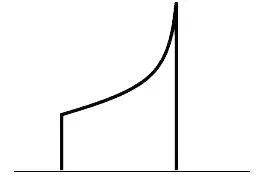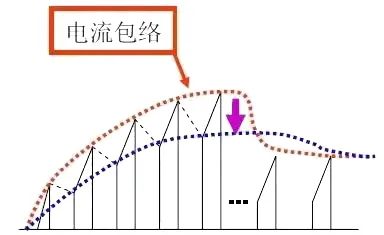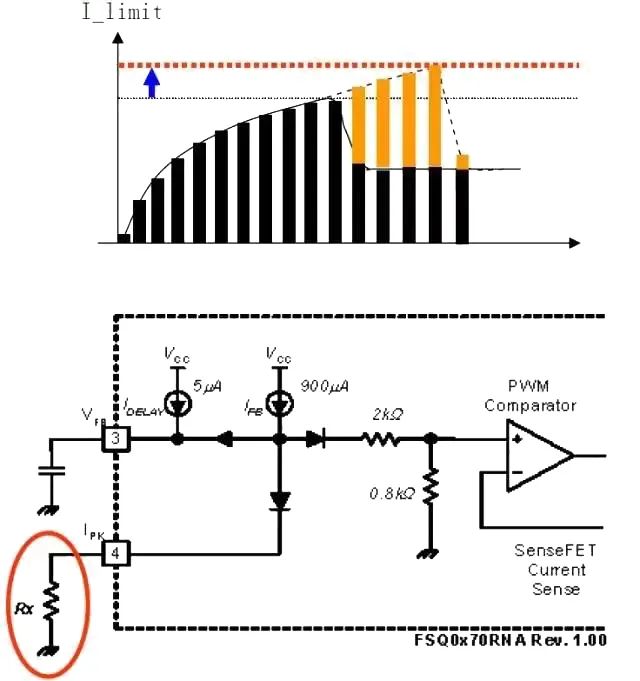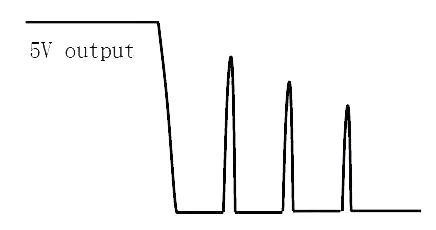-
Mailen Sie uns
yu.li@tiger-transformer.de -
Rufen Sie uns
+49 151 7050 5516
Mailen Sie uns
yu.li@tiger-transformer.deRufen Sie uns
+49 151 7050 55161. Transformer saturation
Transformer saturation phenomenon:
Start up under high voltage or low voltage input (including light load , heavy load, capacitive load), output short circuit, dynamic load, high temperature, etc., the current through the transformer (and switch tube) increases nonlinearly. When this phenomenon occurs, the peak value of the current Unpredictable and controllable, it may lead to current overstress and the resulting switch tube overvoltage and damage.

Transformer Current waveform at saturation
Reason for easy saturation:
1) The inductance of the transformer is too large;
2) The number of turns is too small;
3) The saturation current point of the transformer is smaller than the maximum current limit point of the IC;
4) There is no soft start.
Solutions:
1) Reduce the current limit point of IC;
2) Strengthen the soft start, so that through the transformer The current envelope of the rises more slowly.

2 , Vds is too high
Vds stress requirements:
The worst conditions (highest input voltage, maximum load, highest ambient temperature, power supply< /u>Start-up or short-circuit test), the maximum value of Vds should not exceed 90% of the rated specification
Methods to reduce Vds:
1) Reduce the platform voltage: reduce the ratio of primary and secondary turns of the transformer;
2) Reduce the peak voltage:
a. Reduce the leakage inductance:
The leakage inductance of the transformer stores energy when the switch tube is turned on, which is the main reason for the peak voltage. Reducing the leakage inductance can reduce the peak voltage.
b. Adjust the absorption circuit:
① Use TVS tube;
② Use a slower diode, which can absorb a certain amount of energy (peak );
③Inserting a damping resistor can make the waveform smoother and help reduce EMI.
3. IC temperature is too high
Reason and solution:
1) Internal MOSFET Too much loss:
The switching loss is too large, and the parasitic capacitance of the transformer is too large, resulting in a large cross area between the turn-on and turn-off current of the MOSFET and Vds.
Solution: Increase the distance between the transformer windings to reduce the interlayer capacitance, just like when the winding is wound in multiple layers, add a layer of insulating tape between the layers (interlayer insulation ).
2) Poor heat dissipation:
A large part of the heat of the IC is guided to the PCB and the copper foil on it by the pins. The area of the copper foil should be increased as much as possible and Put more solder
3) The air temperature around the IC is too high:
The IC should be in a place where the air flow is smooth, and it should be kept away from parts with too high temperature.
4. Cannot start with no load or light load
Phenomenon:
Can not start with no load or light load, Vcc repeatedly changes from the starting voltage and The shutdown voltage bounces back and forth.
Reason:
When no-load or light-load, the induction voltage of the Vcc winding is too low, and it enters the repeated restart state.
Solution:
Increase the number of Vcc winding turns, reduce the Vcc current limiting resistor, and add a dummy load appropriately. If you increase the number of Vcc winding turns and reduce the Vcc current limiting resistor, Vcc becomes too high under heavy load, please refer to the method of stabilizing Vcc.
5. Unable to reload after startup
Reason and solution:
1) Vcc is too high when reloading
When the load is heavy, the induction voltage of the Vcc winding is high, so that when the Vcc is too high and reaches the OVP point of the IC, the overvoltage protection of the IC will be triggered, resulting in no output. If the voltage rises further beyond the capability of the IC, the IC will be damaged.
2) The internal current limit is triggered
a. The current limit is too low
When the load is heavy or capacitive, if the current limit is too low, it will flow through the MOSFET The current is limited and insufficient, making the output insufficient.
The solution is to increase the resistance of the current-limiting pin and increase the current-limiting point.
b. The current rising slope is too large
If the rising slope is too large, the peak value of the current will be larger, which will easily trigger the internal current limiting protection.
The solution is to increase the inductance without saturating the transformer.
6. High standby input power
Phenomenon:
Vcc is insufficient at no-load or light-load. This situation will cause the input power to be too high and the output ripple to be too large at no-load and light-load conditions.
Reason:
The reason why the input power is too high is that when the Vcc is insufficient, the IC enters the repeated startup state, and frequently needs high voltage to charge the Vcc capacitor. Cause loss of starting circuit. If there is a resistor in series between the starting pin and the high voltage, the power consumption of the resistor will be large at this time, so the power level of the starting resistor must be sufficient.
The power IC has not entered Burst Mode or has entered Burst Mode, but the Burst frequency is too high, the switching times are too many, and the switching loss is too large.
Solution:
Adjust the feedback parameters to reduce the feedback speed.
7. Excessive short-circuit power
Phenomenon:
When the output is short-circuited, the input power is too large and Vds is too high.
Reason:
When the output is short-circuited, there are many repetitive pulses, and the peak value of the switch tube current is very large, resulting in excessive input power and excessive switch tube current in the leakage inductance Excessive energy is stored on the switch, causing Vds to be high when the switch is turned off.
When the output is short-circuited, there are two possibilities to cause the switching tube to stop working:
1) Triggering the OCP can stop the switching action immediately
a. Trigger the OCP of the feedback pin;
b. The switching action stops;
c. Vcc drops to the IC shutdown voltage;
d. Restart.
2) Trigger internal current limiting
When this method occurs, the duty cycle can be limited, and the switching action is stopped by relying on Vcc falling to the lower limit of UVLO, and the Vcc falling time is longer , that is, the switching action lasts for a long time, and the input power will be large.
a. Trigger the internal current limit, and the duty cycle is limited;
b. Vcc drops to the IC shutdown voltage;
c. The switching action stops;
d. Vcc re-rises to the IC start-up voltage while restarting.
Solutions:
1) Reduce the number of current pulses, so that the OCP of the feedback pin is triggered when the output is short-circuited, so that the switching action can stop working quickly, and the number of current pulses will decrease Fewer. This means that when a short circuit occurs, the voltage at the FEEDBACK pin should rise faster. So the capacitance of the feedback pin should not be too large;
2) Reduce the peak current.
8. No-load, light-load output ripple is too large
Phenomenon:
Vcc is insufficient at no-load or light load.
Reason:
When Vcc is insufficient, the IC oscillates between the startup voltage (such as 12V) and the shutdown voltage (such as 8V) and the IC works intermittently with a long cycle , provide energy to the output for a short time, and then stop working for a long time, so that the energy stored in the capacitor is not enough to maintain the output stability, and the output voltage will drop.
Solution:
Ensure that Vcc can be supplied stably under any load conditions.
Phenomenon:
In Burst Mode, the frequency of intermittent operation is too low. If the frequency is too low, the energy of the output capacitor cannot be kept stable.
Solution:
Slightly increase the frequency of intermittent operation and increase the output capacitance under the condition of meeting the requirements of standby power consumption.
9. Heavy load and capacitive load cannot be started
Phenomenon:
The light load can be started, and the heavy load can also be added after startup. But it cannot start under heavy load or large capacitive load.
General design requirements:
Regardless of heavy load or capacitive load (such as 10000uF), the input voltage is the lowest or the lowest, and the output voltage must rise to a stable value within 20mS .
Causes and solutions (under the premise of ensuring that Vcc is within the normal working range):
Let’s take the capacitive load C=10000uF as an example to analyze ,
According to the specifications, there must be enough energy to make the output rise to a stable output voltage (such as 5V) within 20mS.
E=0.5*C*V^2
The larger the capacitance C, the greater the energy that needs to be transferred from input to output within 20mS.

10 , no-load, light-load output bounce
Phenomenon:
When the output is no-load or light-load, turn off the input voltage, the output (such as 5V) may appear The waveform of the voltage bounce is shown in the figure below.

< strong>Reason:
When the input is turned off, the 5V output will drop, Vcc will also drop, and the IC will stop working, but when the load is no-load or light-load, the large capacitor voltage of the huge PC power supply cannot quickly It can still provide a large current to the high-voltage start pin to make the IC restart, and 5V is output again, bouncing.
Solution:
Connect a large current-limiting resistor in series at the start pin, so that the large capacitor voltage drops to a relatively high level and is not enough to provide enough start-up current to the IC.
Connect the starter to the front of the rectifier bridge, and the startup will not be affected by the voltage of the large capacitor. When the input voltage is turned off, the start pin voltage can drop rapidly.
Reviewing Editor: Liu Qing